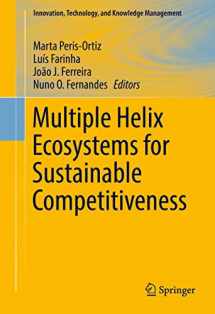
Multiple Helix Ecosystems for Sustainable Competitiveness (Innovation, Technology, and Knowledge Management)
Book details
Summary
Description
This book discusses the main issues, challenges, opportunities, and trends involving the interactions between academia, industry, government and society. Specifically, it aims to explore how these interactions enhance the ways in which companies deliver products and services in order to achieve sustainable competitiveness in the marketplace.
Sustainable competitiveness has been widely discussed by academics and practitioners, considering the importance of protecting the environment while sustaining the economic goals of organizations. The Quintuple Helix innovation model is a framework for facilitating knowledge, innovation and sustainable competitive advantage. It embeds the Triple and the Quadruple Helix models by adding a fifth helix, the “natural environment.” The Triple Helix model focuses on the university-industry-government triad, while the Quadruple adds civil society (the media- and culture-driven public) as a fourth helix.
The Quintuple Helix model facilitates research, public policy, and practical application of sustainable competitiveness principles. Applying the most recent developments and theoretical insights of this model, the contributors to this volume address such questions as: how do government, academia, industry and civil society actors interact for promoting sustainable competitiveness at the country (regional) level? How do these actors influence sustainable operations management at the company (business) level? In so doing, they shed new light on the dynamics of economic growth, sustainability and competitiveness.


We would LOVE it if you could help us and other readers by reviewing the book
Book review



